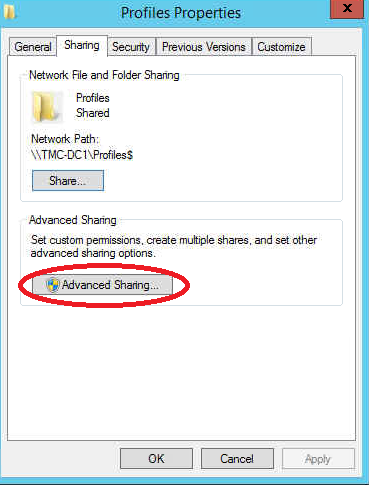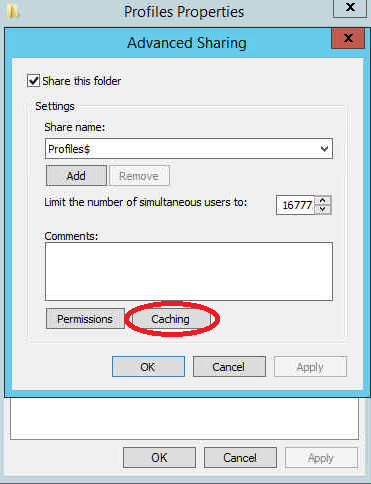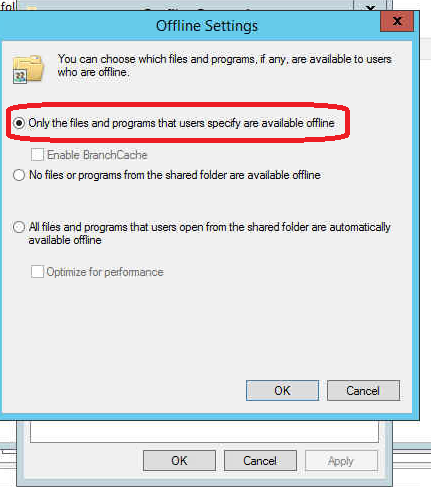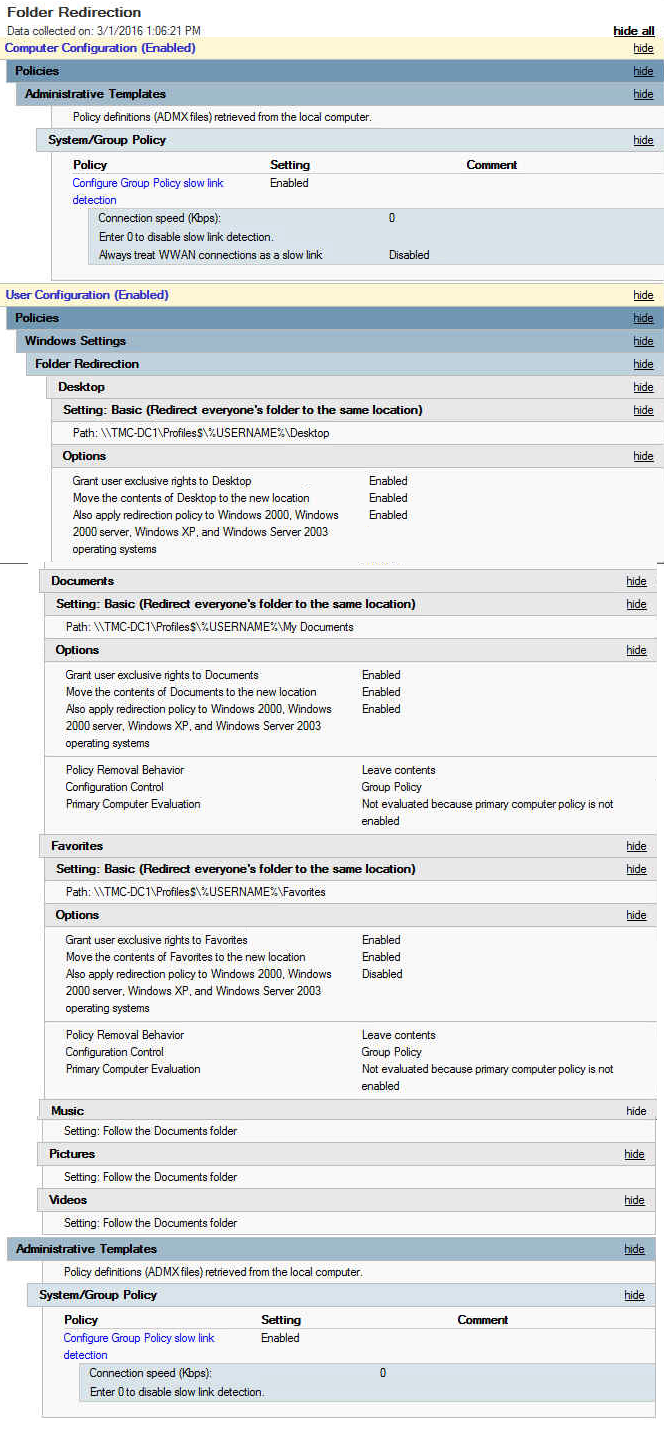Putting this here so I don’t ever lose it again.
Map to OneDrive as a Mapped Drive
1. First, please refer to the troubleshooting tips in the following article before you begin to map the network drive:
• Upgrade your IE to the latest version.
• Add your SharePoint Online sites to the trusted sites
http://support.microsoft.com/kb/2616712
2. Select the Keep me signed in check box when you sign in to your Office 365 accounthttp://portal.office.com .
3. After signing to Office 365, get to your OneDrive for Business, and copy the OneDrive for Business URL like https://contoso-my.sharepoint.com/personal/user_domain_com/documents/
4. Right-click the Computer icon from the desktop, and then click Map Network Drive.
5. Select a Drive and then paste the URL of the library you copied before in the Folder input box.
6. Make sure the check boxes of Reconnect at sign-in and Connect using different credentials are selected, and then click Finish.
7. Enter the username and password of your Office 365 when you are prompted to enter the credentials> Click OK.
Configure iPhone/IMAP Access to a Shared Mailbox – Office 365
These instructions are specifically for setting up access to a Office 365 shared mailbox on an iPhone but the settings could possibly be used to configure any IMAP mail client.
- Settings app → Mail → Accounts → Add Account → Other → Add Mail Account
- The settings at this screen don’t matter much. We’ll put the correct ones in the next screen. Fill it out and tap Next
- Name: User’s name
- Email: Email address of the shared mailbox
- Password: Password associated with the user’s primary mailbox
- Description: This is how the mailbox will be labeled in the Mail app
- At the next screen, we need to get a lot of settings right.
- Name: User’s name of shared mailbox name. This will be what a recipient sees for the “From” display name in their mail client when they receive a message from the shared mailbox
- Email: Email address of the shared mailbox
- Description: This is how the mailbox will be labeled in the Mail app
Incoming Mail Server - Host Name: outlook.office365.com
- Username: [email protected]\alias_of_shared_mailbox
(The alias of the shared mailbox can be found in through Exchange Admin Center → Recipients → Shared → Double-click on the shared mailbox and its in the General tab. Note that the alias is often the first part of the email address but isn’t always! You need to check.) - Password: Password associated with the user’s primary mailbox
Outgoing Mail Server - Host Name: smtp.office365.com
- Username: [email protected]
(Note that this is different than incoming mail server settings!) - Password: Password associated with the user’s primary mailbox.
- Next. Should be self-explanatory from here. Check with the end-user that they can open the Inbox of the shared account in the Mail app.
Raspbian Login Loop with No Prompt
If you’ve confirmed the username and password definitely work, but login is looping.
SSH to the computer.
Run ls -lah.
If in the output the line you get:
-rw------- 1 root root 53 Nov 29 10:19 .Xauthority
then you need to do sudo chown username:username .Xauthority and try logging in.
Java Error 1603
I really hope I don’t ever need this again…
GUI Solution
Go to C:\program files\java\bin\javacpl.exe, go to the Security tab, and uncheck “Enable Java content in the browser”. Close out of the Java Control Panel and try the update/installation again and it should work.
Afterwards, go in to javacpl.exe and re-enable “Enable Java content in the browser” or else the user will be unable to use any in-browser Java applets.
If Java has already been uninstalled and javacpl.exe no longer exists, then refer to the command line solution instead.
Command Line Solution
Download the offline Java installer and run it from the command line with WEB_JAVA=0 after the installer path.
Afterwards, go in to javacpl.exe and re-enable “Enable Java content in the browser” or else the user will be unable to use any in-browser Java applets.
iDRAC Commands
The following commands can be issued from inside the Windows OS to control the iDRAC. OpenManage must be installed on the server.
Get Network Config
racadm getniccfg
Change Network Config
racadm config -g cfgLanNetworking -o cfgNicEnable 1
racadm config -g cfgLanNetworking -o cfgNicIpAddress x.x.x.x
racadm config -g cfgLanNetworking -o cfgNicNetmask 255.255.255.0
racadm config -g cfgLanNetworking -o cfgNicGateway x.x.x.x
racadm config -g cfgLanNetworking -o cfgNicUseDHCP 0
racadm config -g cfgLanNetworking -o cfgDNSServersFromDHCP 0
racadm config -g cfgLanNetworking -o cfgDNSServer1 y.y.y.y
racadm config -g cfgLanNetworking -o cfgDNSServer2 y.y.y.y
Soft reset iDRAC
racadm racreset
Change DRAC to or from Dedicated NIC and Shared NIC
racadm config -g cfgLAnNetworking -o cfgNicSelection 0 or 1 (0 for shared, 1 for dedicated)
Changing root password
racadm config -g cfgUserAdmin -o cfgUserAdminPassword -i 2 newpassword
Enabling Device Owner Mode using Android Debug Brdige (ADB)
- First download and install the Android Debug Bridge (ADB) binary
- Download the latest Android SM app from https://dl.meraki.net/androidsm/AndroidSM.apk
- On a computer, , open command prompt and navigate to the location you installed the SDK. Default is %USERPROFILE%\AppData\Local\Android\sdk\platform-tools
Run the following command to initialize ADB:- adb start-server
- With a new (or factory reset) Lollipop Android device, go through the setup wizard WITHOUT adding a Google account. If you accidentally added an account, simply remove the account from the Settings app once you finish the setup wizard.
- Once the setup wizard is done and you’re on your device’s home screen
- Go to Settings
- Go to “About device” (Might be named slightly different)
- Click the “Build number” field 7 times. This will turn on “Developer options”
- Go back to Settings
- Go to “Developer options”
- Scroll down and enable “USB debugging”
- Plug the device into computer
- Your device might prompt you with a trust dialog. Click accept.
- Your device might prompt you with a trust dialog. Click accept.
- On the computer, run the following command to install the latest Android SM app you downloaded onto your device:
- adb install AndroidSM.apk
- adb install AndroidSM.apk
- Once installed, run the following command to set Systems Manager as the device owner of the device:
- adb shell dpm set-device-owner com.meraki.sm/.DeviceAdmin
Preparing iPads for MDM
- On the iPad, write down the iCloud account that is currently logged in, then log out of the account and ensure that Find My iPad is turned off.
I cannot begin to stress this enough.
Make absolutely sure you write down the iCloud account before you do anything else.
If you do not, and the iPad becomes activation locked, we have basically bricked the iPad. - Plug up your iPad (or multiple iPads, you can do more than one at once) to a Mac. Make sure that Apple Configurator 2 has been installed on it and set up. If it hasn’t been, look here.
Start up Apple Configurator 2, then right-click on the iPad and click “Prepare.” - Choose “Manual.”
- Choose “Meraki MDM” as your server.
- Choose “Supervise Devices” and “Allow devices to pair with other computers.” The check mark for “Supervise Devices” is the whole point of this.
- Choose the organization name that fits.
- Choose “Choose only some steps” and choose the ones in the screenshot below. Click “Prepare” and it should go through a bunch of stuff, including probably (but not necessarily) re-installing the OS.
- Once the iPad is done, you should see this on the iPad’s screen. Go ahead and tap “Get started.”
- Connect to a wifi network.
- Enable Location Services.
- Tap “Apply configuration.” This step enrolls the iPad in the MDM.
Note: If you get an error about an invalid profile, that means there aren’t enough licenses. A license will need to be freed up before you can prepare the iPad. - Create a Passcode
- Sign in with the Apple ID for the organization.
- Don’t restore passwords.
- Once you get into the iPad, wait a bit for any prompts on the iPad (you may be prompted to re-enter the password for the Apple ID). Depending on which Organization you used in step 6, you may need to go into the JAMF Dashboard and put the iPad into a site to get the apps it needs.
Creating a Stand Alone Application
- Open the Deployment Toolkit and go to the Application folder. The Application folder has three folders, one of which says “Stand Alone Applications.” This is where we will keep all of these installers, if only because that will keep them organizationally out of the way during the deployment. Generally speaking, all deployments should be relying on Application Bundles to have all of the applications that are needed for a client in them.

- Right-click on the “Stand Alone Applications” folder and click “New Application.”

- Leave the radio button on “Application with source files.” This will import the source files needed for installation into the deployment share, rather than rely on a network path for reference.

- Name the Application. You can fill in the optional information, but I never do.

- Browse to the source directory. This is the folder that should have all of the files that are needed for installation.

- Type in the name of the application.

- This is the most important part of this whole thing. This is the command line command that you use to run the installer. The second line, in the “Working directory” field,” is the directory where the command will be run.

- Hit Next and it should be done.

Folder Redirection
A guide to how I do folder redirection.
Step-by-step guide
- Create your share where you will keep the profile folders
- For this example, the folder will be at D:\Profiles.
- Change SMB permissions to include “Everyone / Full control”
- Change NTFS permissions to include:
- “System / Full Control / This folder, subfolder and files”
- “Administrators / Full Control / This folder, subfolder, and file,”
- “Creator Owner / Full Control / Subfolders and Files only”
- Domain Users / List folder, Read data, Create Folders, Append Data, Read Attributes, Read Extended Attributes, Read Permissions / This folder only”
- Under Advanced Sharing…” change the share name to Profiles$.
- If you are going to do offline file mode with these files, check off the option to allow files and programs that users specify to be available offline.



- Create a GPO as below, except grant user exclusive rights to <folder> should be disabled.:

- Apply the GPO to the users container.
Location of Folder Redirection Registry Keys
HKEY_CURRENT_USER\Software\Microsoft\Windows\CurrentVersion\Explorer\User Shell Folders
